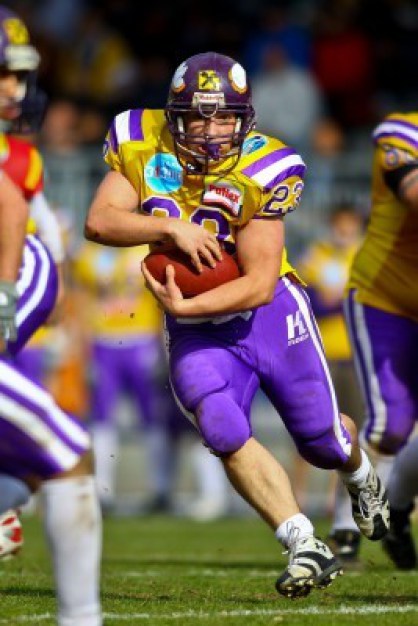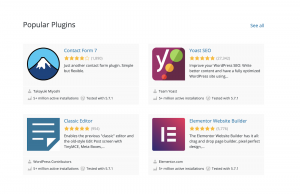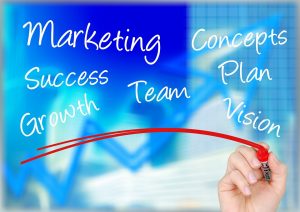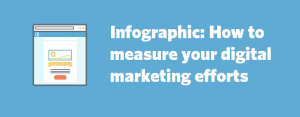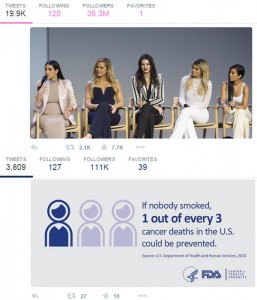Conversion is the end zone in marketing. Not just getting folks to buy your product, but speeding them on their buying journey by signing up for your mailing list, downloading your white paper, or going to a webinar.
Don’t believe me? According to Hubspot research, 13% of all leads come through email marketing; making it the 3rd best tool for lead generation.
And, no matter what you’re conversion goals are, digital media has a huge advantage over traditional media — it’s actionable.
Traditional media versus digital media
I know I’ve posted about the huge differences between traditional media and digital media before (and, if you missed these posts, here’s a link to the 16 differences between traditional media and digital media and another about integrating traditional media versus digital media).
But, with digital media, it’s all about the click — creating an urgency and tools for converting immediately.
If it’s not immediately obvious why digital media is more actionable than traditional media, just think about it for a minute.
Traditional media — print, broadcast (and cable), radio, public relations …
How are you supposed to respond when you see their message?
I mean, you’re driving down the road and see a billboard for a product or hear a radio commercial.
Do you stop your car to immediately call the number to order?
Do you whip out your smartphone to go online and order?
Of course you don’t. Even if the commercial message manages to cut through the clutter — other billboards, scenery, traffic, radio programming — and manages to reach your consciousness, you’re not about to interrupt your drive to order.
And, even though many folks, especially millennials making up the so-called Connected Consumers, watch TV with their laptop burning their legs because they’re too distracted to notice or their mobile device in their hands, they’re using the 2 devices in parallel, not in tandem. That means they’re watching TV with one eye (and likely zapping through commercials) and stalking their ex on Facebook. They’re not watching your commercial and reaching for their device to order your product — unless you’re Dominos.
Maybe consumer behavior will be different with Smart TV and tools like Delivery Agent that let you buy products you see on TV programs, but I doubt it. Consumer behavior patterns get locked in and changing those behaviors takes time and is unpredictable. So, for the forseeable future, your traditional media spend won’t be actionable.
Digital media versus social media
Digital media, by its very nature, is actionable. See a product in an Adwords ad or Facebook promoted post — click to go directly to the page to buy the product. In fact, if you don’t do digital media right (don’t include landing pages to let clickers buy your product directly, for instance) and your quality score increases your digital advertising costs and buries your ad on the back pages in SERPs (ranking on search engine results).
Unless you do it the right way, social media also isn’t actionable. I have this argument all the time with potential clients. Social media isn’t really marketing unless you’re ultimate goal is to drive traffic to your website. Sure, I know Facebook is really pushing it’s storefront app, Shopify, but there are lots of reasons to use an ecommerce website (with a blog) over the tools offered by Shopify.
Extending this argument, that means your goal with social media marketing should be driving traffic to your website (digital media), so social media isn’t really actionable by itself.
Is it all about the click?
Let’s return to my original statement — it’s all about the click. Is that really true?
And, if it’s all about the click, why use traditional media and social media when they don’t generate clicks?
Traditional media and social media both make sense because they drive potential consumers along the customer journey. Conversion is merely the end of that journey and too great a focus on the end, reduces the likelihood you’ll ever get there.
To continue the football analogy (with apologies to my readers outside the US for whom US football doesn’t exist), even though you only score when the football gets into the end zone (converts), you can’t throw a series of “hail mary’s (a term referring to a long pass aimed close to the end zone with the notion of a quick score). Instead, you systematically move the ball down the field in a series of first downs until you’re within striking distance of the end zone.
The customer journey is the same way. You need to focus on moving consumers from:
- reach
- acquire
- develop
- advocate
Reach
Traditional media and social media are excellent for reaching potential consumers with commercial messaging. Think about a Super Bowl ad. It reached over 100 million viewers in 2014. And, a well crafted social media strategy amplifies your original message so it might reach millions or billions on Twitter, Facebook, YouTube, or other social platform.
Although, I question the wisdom of spending $ 4 million on a 30 second Super Bowl ad when your entire digital marketing budget is only a little more than that. I think heavy spending on traditional advertising stems from the fact that traditional advertising is what’s been done for over a century to mass market products. Reducing spend on traditional advertising spells disgrace and potential dismissal for the executive making that decision if sales drop even slightly. Meanwhile, the upside of using digital advertising is both less tangible and slow. No one is likely to lose their job over NOT doing digital marketing and, even successful digital media is more a slow burn than an immediate spike in sales.
Acquire
Consumers buy products based on emotion, not reason. Even industrial buyers.
Social media, traditional media, and digital media all aid in pushing the emotional buttons that drive sales. Hence, setting the stage for conversion, social media, traditional media and digital media establish the brand image and make the emotional connections necessary to make conversion happen.
Develop
Developing your audience happens better on social and digital media because there’s more real estate and more frequent interactions on these platforms than on traditional media. In part, that’s because content distribution on social and digital networks is costless, while traditional channels charge high fees for distributing content.
Now, don’t get me wrong — content marketing isn’t free. Far from it. But, distribution is free. And, it’s that consistent flow of valuable content that makes social and digital media work. It’s the grease that gets your brand to show up in all kinds of searches (not just internet search, but on all kinds of social platforms).
Content (both created and curated) goes beyond emotional involvement with the brand by creating a tit-for-tat relationship. This indebtedness creates an obligation making purchase more likely.
Not only that, a sound content marketing strategy of sharing value with your target market clearly establishes you as a leader in your industry and, in many cases, an expert in your field. Your target audience trusts you and that trust results in conversion.
Advocate
In the old days, consumers might have gone around humming your jingle, thus sharing your brand with others. Today, social and digital media generate the engagement that drives advocacy.
And, don’t underestimate the importance of an advocate. Sometimes called brand champions or brand ambassadors, advocates are the online cheerleaders for your brand. They not only add their voice to your marketing messages which makes them more trustworthy, but they aid in customer support by answering questions and solving user problems.
Digital & Social Articles on Business 2 Community
(441)
Report Post
